Section Library
Use the automotive section library for rapid concept development in the early phases of the vehicle design process.
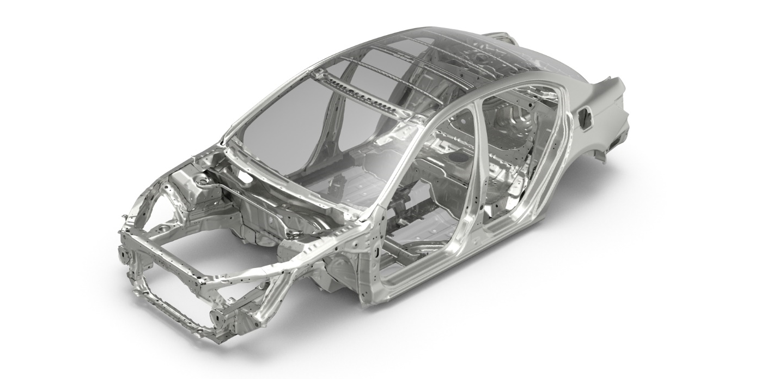
Figure 1. Sample Body in White model (2011 Honda Accord)
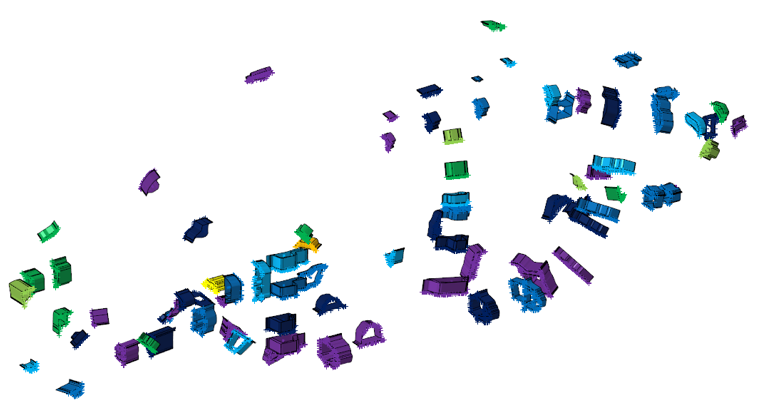
Figure 2. Sections from Section Library
*source : https://www.nhtsa.gov/crash-simulation-vehicle-models Honda Accord MY 2011
To access the library:
Sample Section
Each section in the section library contains:
- A Beam element with a section property
- 2D elements showing the shape of the section. The 2D element section is welded at the flanges.
- Geometric lines representing the shape of the section that can be used for concept modeling. The geometric sections are not auto-welded at the flanges.
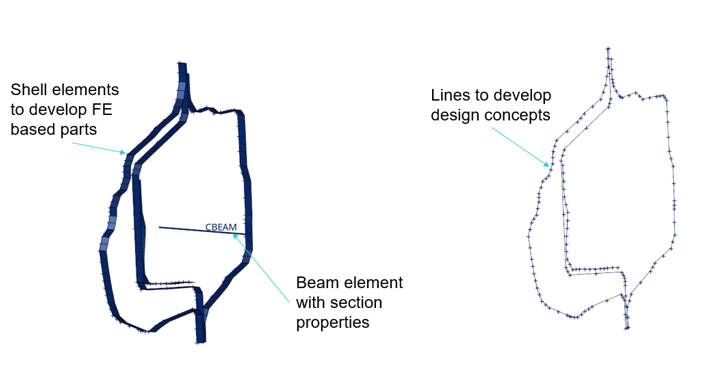
Figure 4. Sample Section
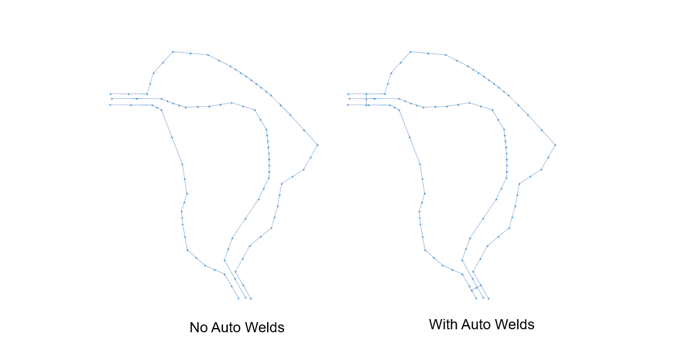
Figure 5. Beam Section with Auto Welds
Numbering Scheme
The section library follows a numbering scheme that is explained in detail below.
Each section can be identified by a 7-digit number
- The first digit from the left corresponds to the section’s location. It can
take values of 1, 2, or 3.
- 1: If the section is on the left side of the vehicle (for example, left-side B pillar)
- 2: If the section is on the right side of the vehicle (for example, right-side B pillar)
- 3: If the section is in the middle of the vehicle (for example, tunnel)
- The second digit from the left corresponds to the assembly of the section.
It can take values from 1 to 5.
- 1: If the section belongs to the Side Frame assembly
- 2: If the section belongs to the Roof assembly
- 3: If the section belongs to the Front Structure assembly
- 4: If the section belongs to the Front Floor assembly
- 5: If the section belongs to the Rear Floor assembly
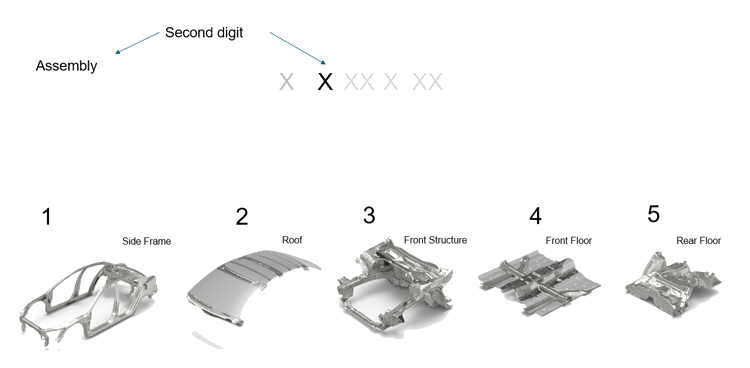
Figure 6. Second Digit Representing Different Assemblies
- The third and fourth digits correspond to parts from the assembly. Each assembly has a number of parts; for example, the list of sample parts goes to 11 in Figure 8.
- The fifth digit corresponds to the FE representation of the section. It can
take values of 0, 2, or 5.
- 0: If the FE representation is PBEAM
- 2: If the FE representation is Beam Section
- 5: If the FE representation is PSHELL
- The sixth and seventh digits correspond to the component number.
An example of the numbering scheme implemented on the left-hand side rocker/sill section can be seen in Figure 7
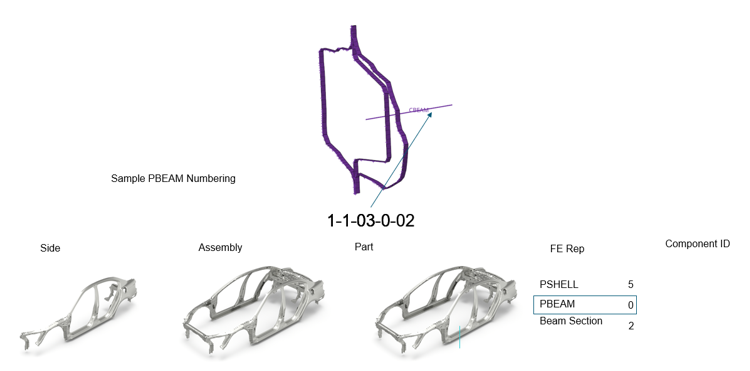
Figure 7. Numbering Scheme Example
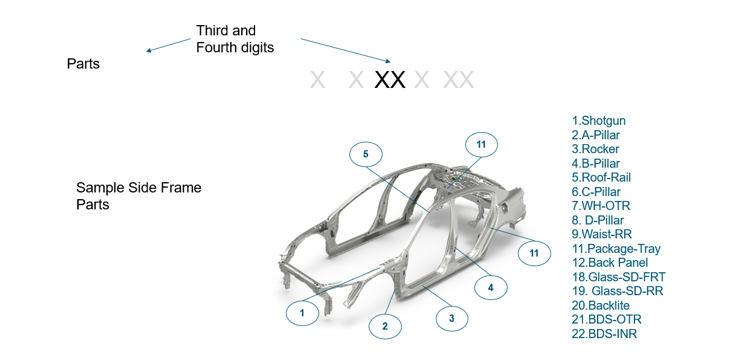
Figure 8. Sample Side Frame Parts
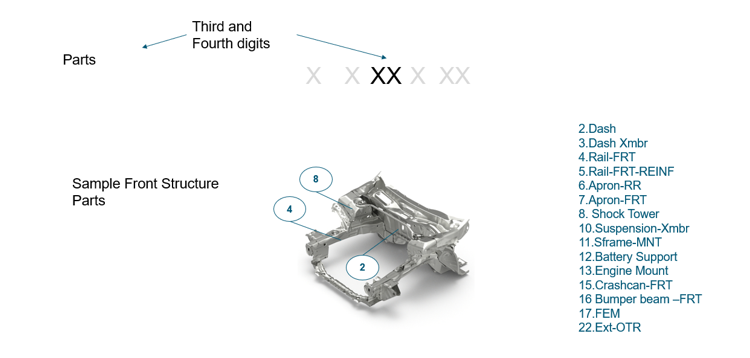
Figure 9. Sample Front Structure Parts
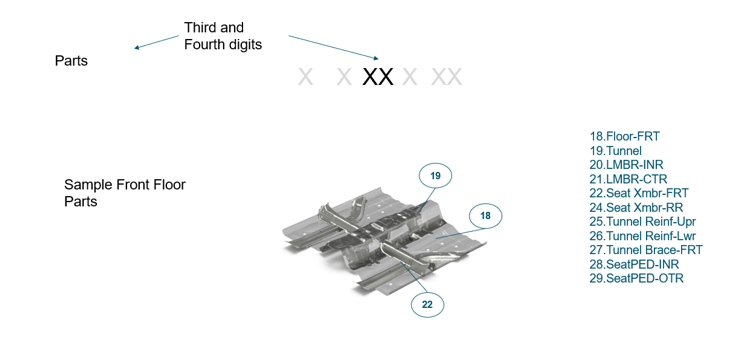
Figure 10. Sample Front Floor Parts
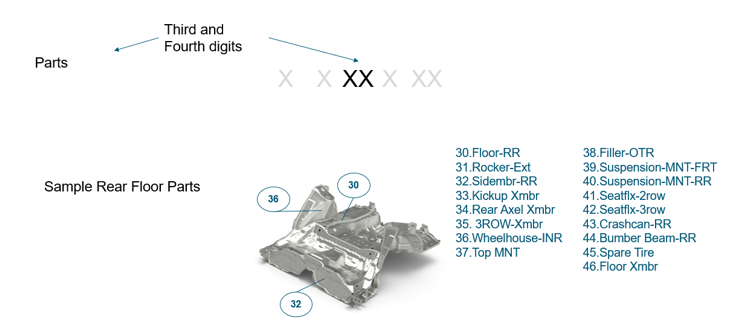
Figure 11. Sample Rear Floor Parts
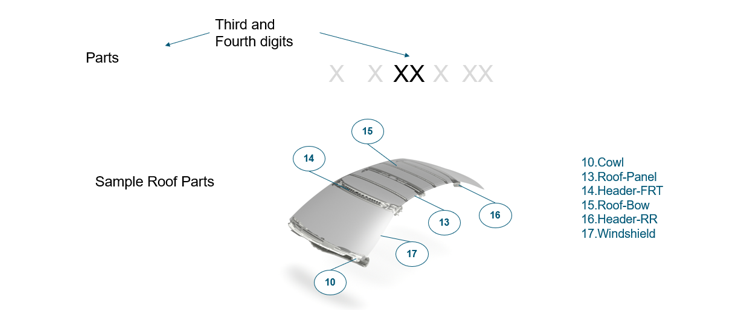
Figure 12. Sample Roof Parts
